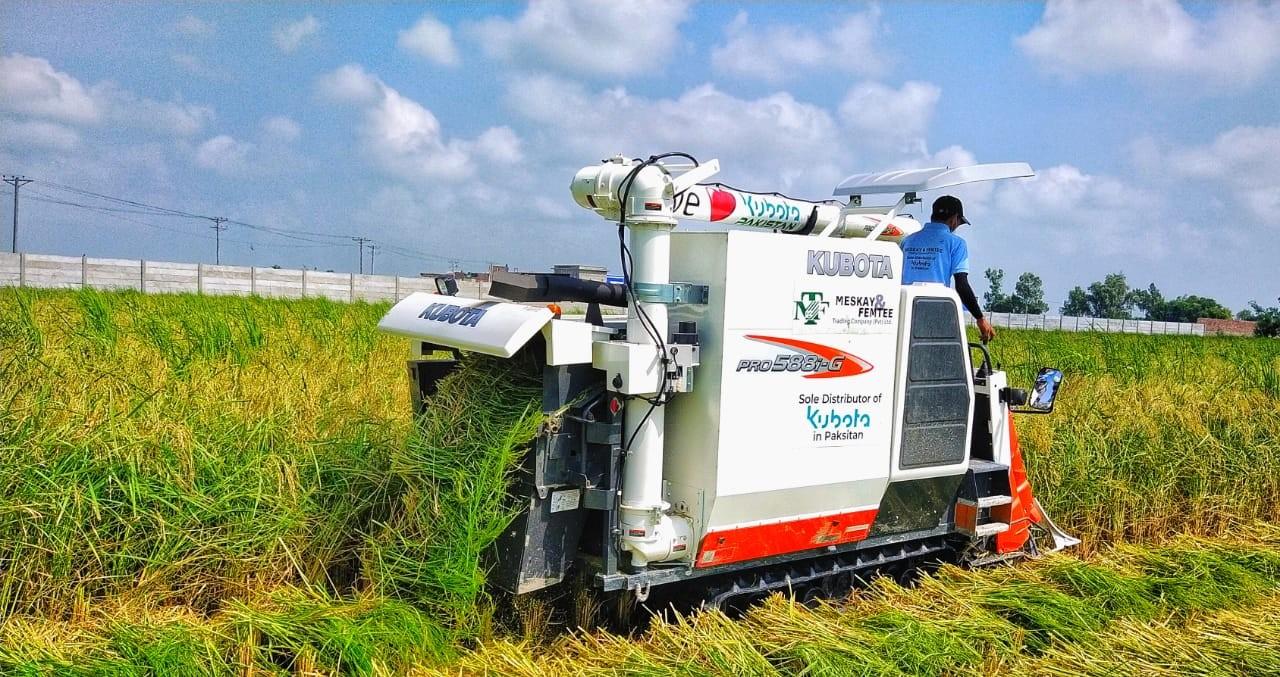Agriculture is the backbone of India's economy, employing a significant portion of the population. With advancements in technology, the agricultural sector has seen substantial improvements in efficiency and productivity. One such technological advancement is the harvester, a vital machine in modern farming. This article explores the types, uses, and prices of harvesters in India, offering insights for farmers looking to enhance their agricultural practices.
Types of Harvesters
1. Combine Harvesters
- Description: Combine harvesters are versatile machines that perform multiple functions, including reaping, threshing, and winnowing. They are used for harvesting a variety of crops such as wheat, rice, barley, and oats.
- Uses: These harvesters significantly reduce the labor and time required for harvesting crops. They ensure that grains are harvested efficiently, minimizing losses and enhancing productivity.
- Price: The price of combine harvesters in India ranges from ₹15 lakh to ₹40 lakh, depending on the brand, capacity, and features.
2. Sugarcane Harvesters
- Description: Specifically designed for sugarcane crops, these harvesters are equipped to handle the tough and tall stalks of sugarcane.
- Uses: Sugarcane harvesters cut and strip the leaves from the cane, efficiently collecting the crop for processing. They play a crucial role in the sugar industry by reducing manual labor.
- Price: Sugarcane harvesters in India are priced between ₹20 lakh and ₹50 lakh, with variations based on the model and technology used.
3. Forage Harvesters
- Description: Forage harvesters, also known as silage harvesters, are used for chopping and processing forage crops like maize, grass, and alfalfa.
- Uses: These machines are essential for producing silage, which is used as animal feed. They ensure uniform chopping and high-quality feed production.
- Price: The cost of forage harvesters ranges from ₹10 lakh to ₹30 lakh, influenced by the machine's capacity and additional features.
4. Corn Harvesters
- Description: Corn harvesters are specialized machines for harvesting corn. They can perform tasks such as picking ears of corn and removing kernels from the cobs.
- Uses: These harvesters streamline the corn harvesting process, making it faster and more efficient. They are crucial for large-scale corn production.
- Price: Corn harvesters in India typically cost between ₹12 lakh and ₹35 lakh, depending on their specifications and capabilities.
5. Potato Harvesters
- Description: Potato harvesters are designed to dig up potatoes from the soil and separate them from dirt and debris.
- Uses: These machines facilitate the harvesting of potatoes, reducing the manual effort and ensuring minimal damage to the crop.
- Price: The price of potato harvesters ranges from ₹8 lakh to ₹25 lakh, based on the model and features.
Uses of Harvesters
Harvesters play a crucial role in modern agriculture by enhancing productivity and efficiency. Here are some key uses of harvesters:
1. Labor Reduction: Harvesters drastically reduce the need for manual labor, addressing labor shortages and cutting down the time required for harvesting.
2. Efficiency and Speed: These machines harvest crops quickly and efficiently, ensuring timely collection and reducing crop losses.
3. Quality Improvement: Harvesters ensure uniformity and quality in the harvested produce, which is essential for market standards and processing.
4. Cost-Effectiveness: While the initial investment in a harvester can be high, the long-term benefits in terms of labor savings, increased yield, and reduced crop losses make them cost-effective.
5. Versatility: Many harvesters are designed to handle multiple crops, making them versatile tools for farmers with diverse agricultural activities.
Price Considerations
The price of harvesters in India varies based on several factors:
1. Type of Harvester: Different types of harvesters have varying costs. For instance, combine harvesters are generally more expensive than potato harvesters due to their multifunctionality and larger size.
2. Brand and Model: Established brands with advanced technology and features tend to have higher prices. However, they often offer better performance and reliability.
3. Capacity and Features: The capacity of the harvester, in terms of how much it can process in a given time, and additional features like GPS, automation, and durability, affect the price.
4. Condition: New harvesters are significantly more expensive than used ones. However, used harvesters can be a cost-effective option for small to medium-scale farmers.
5. Financing Options: Many manufacturers and financial institutions offer financing options, making it easier for farmers to invest in harvesters without the burden of upfront costs.
Leading Harvester Brands in India
Several brands dominate the harvester market in India, known for their quality and reliability:
1. John Deere: Renowned for its robust and efficient machinery, John Deere offers a range of harvesters suitable for various crops.
2. Mahindra: A leading name in Indian agriculture, Mahindra provides affordable and efficient harvesting solutions.
3. Claas: Claas is known for its advanced technology and high-performance harvesters, catering to large-scale farming operations.
4. New Holland: Offering a wide range of harvesters, New Holland combines innovation with reliability, making it a preferred choice among farmers.
Conclusion
Harvesters have revolutionized the agricultural landscape in India, offering a blend of efficiency, speed, and cost-effectiveness. With various types available to suit different crops and farming needs, these machines are essential investments for modern farmers. Although the initial cost can be high, the long-term benefits in terms of productivity and reduced labor costs make harvesters invaluable assets in the agricultural sector. As technology continues to advance, the future of harvesting looks promising, with even more efficient and versatile machines on the horizon.



